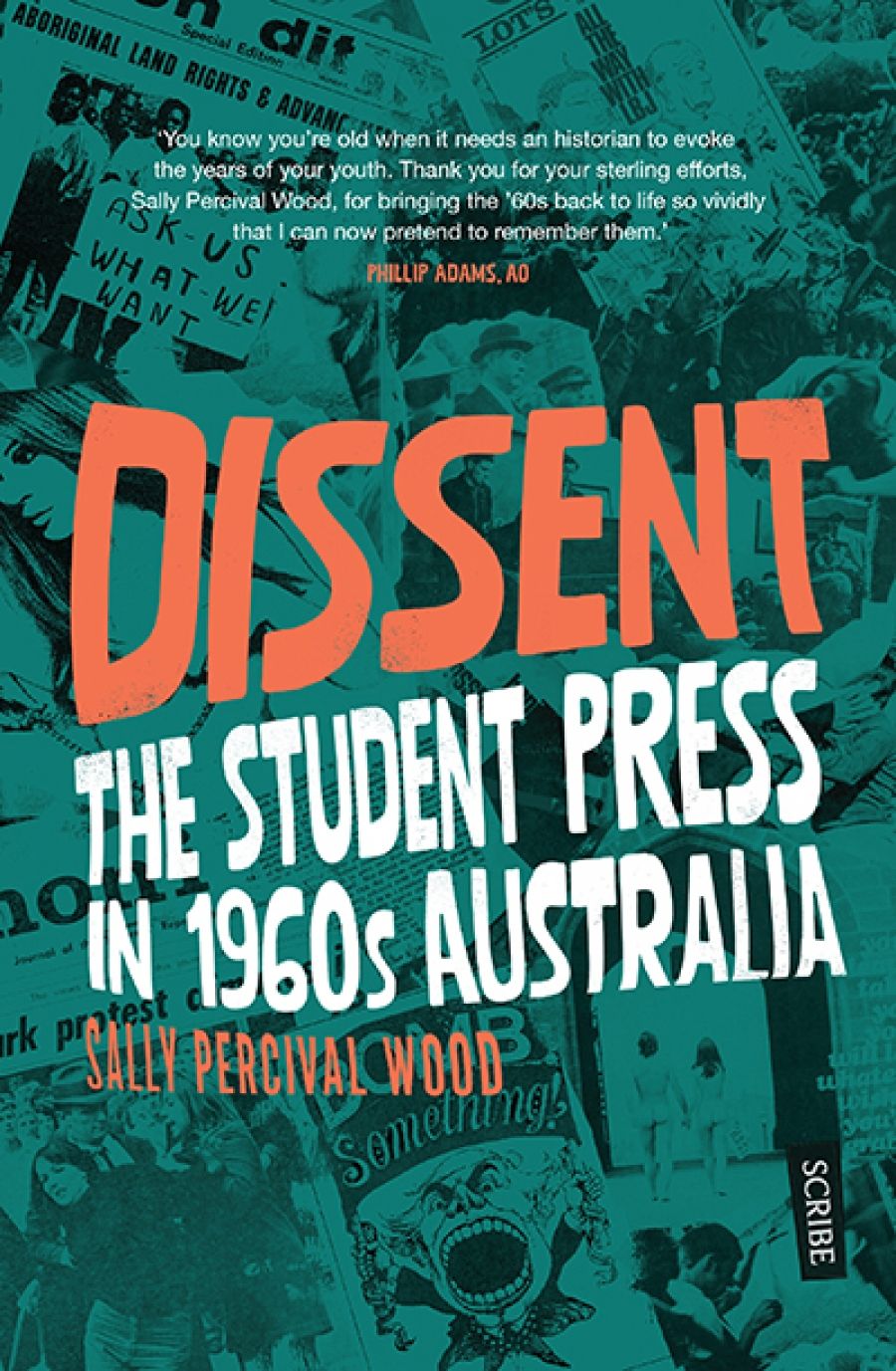
- Free Article: No
- Contents Category: Media
- Custom Article Title: Blanche Clark reviews 'Dissent: The student press in 1960s Australia' by Sally Percival Wood
- Review Article: Yes
- Online Only: No
- Custom Highlight Text:
The Guardian’s Australian bird of the year survey recently had the University of Melbourne Student Union (UMSU) council in a flap. The student newspaper Farrago reported that the council had passed a motion condemning The Guardian for its failure to provide a preferential voting system ...
- Book 1 Title: Dissent
- Book 1 Subtitle: The student press in 1960s Australia
- Book 1 Biblio: Scribe, $32.99 pb, 320 pp, 9781925322194
Wood’s ambitious agenda for Dissent is structured around six themes: censorship, sex, women, Indigenous people, the Vietnam War, and the art of protest. She tries to focus on the individuals who ‘really did influence events’, but their role is often overwhelmed by the broader social and political debate.
Donald Horne, editor of the University of Sydney’s Honi Soit in 1941, is something of a hero in Dissent, his book The Lucky Country (1964) ‘landing like a grenade in the ever-expanding suburbs’ and ‘forming the backdrop to the story of the 1960s student press’. One of the longest-serving student editors, Pete Steedman – loved or hated for his ‘virtuoso profanity’ – features prominently. He provided Wood with a trove of primary material from his time as editor of Monash University’s Lot’s Wife in 1965–66 and Farrago in 1967–68.
Wood, who writes in a clear and lively style, begins Dissent with quick facts about the education revolution, which saw confidence and rebellion shake-up postwar stoicism and conservatism. University enrolments doubled from 53,633 in 1960 to 110,250 in 1965 after the Commonwealth increased funding. Nine new universities were established in the 1960s and 1970s, including Monash University in 1961. The author covers nine student newspapers – Farrago, Lot’s Wife, On Dit, Honi Soit, Semper Floreat (UQ) Togatus (UTAS), Woroni (ANU), Tharunka (UNSW), and Pelican (UWA) – and traces their development from conformity to radicalism, aided in part by the advent of web offset printing.
Student editors made their mark by arcing up over puritanical censorship laws, which extended to the banning of books such as D.H. Lawrence’s Lady Chatterley’s Lover and Mary McCarthy’s The Group. Percival Wood recounts the case of Oz editors Richard Neville and Richard Walsh, both former student editors, who were sentenced to six months’ imprisonment with hard labour for publishing Martin Sharp’s sordid cartoon depicting pack rape. Sharp was sentenced to four months’ imprisonment. The author’s modern-day moral judgements are threaded into the narrative: ‘The matter of the “gang bang” did not appear to the main object of concern. What really shocked was the severity of the sentences handed down.’
 Oz editor Richard Neville and Bob Geldof, 1980 (photograph by William Yang, National Library of Australia)
Oz editor Richard Neville and Bob Geldof, 1980 (photograph by William Yang, National Library of Australia)
University of Sydney’s Bob Ellis – co-editor of Honi Soit in 1963 with Laurie Oakes and Jim Coombs – elicits a wry comment for his conclusion in 1962 that abortion should be a hanging offence: ‘The Ellis solution would have kept the gallows in Australia extremely busy.’
The chapter on Indigenous affairs, entitled ‘The Unlucky Australians’, summarises ‘a past of maladministration, abuse and neglect’ and highlights several history-making events, including the 1967 referendum. Charles Perkins, one of the first Indigenous students to enrol at the University of Sydney, in 1963, attracted media attention around the world with the Freedom Ride, a bus tour of rural New South Wales protesting against racial segregation. But it was the Vietnam War that truly galvanised students. Steedman and Phillip Frazer became joint editors of Lot’s Wife in mid-1965. Their first cover ‘reflected a changing mood on Melbourne’s university campuses’: ‘A photo collage included a Warsaw concentration camp, race riots in the US, soldiers shoving a captive’s head down a hole, a dismembered body, and a self-immolating Buddhist monk.’ The anti-war articles rankled the Australian government and ASIO’s files on students ‘swelled’. A campaign to raise funds for Vietnam’s National Liberation Front divided students at Monash and Melbourne campuses.
Although the student editors often seem like bit players in the dramas unfolding across the nation, the student newspapers were clearly a rehearsal space for future leaders in politics, media, and academia. Dissent concludes with the election of the Whitlam government in 1972, its bold agenda bearing ‘an uncanny resemblance to the demands amplified across student newspapers in the 1960s’.
For some older readers, Dissent may seem like a romp through familiar territory. For younger readers, it provides a chance to appreciate debates that have shaped the nation. It is to be hoped they will disprove Percival Wood’s sense that the student press has lost its nerve. The future of journalism and politics depends on their courage and willingness to fly (and tweet) in the face of convention.


Comments powered by CComment